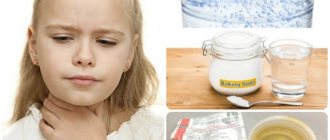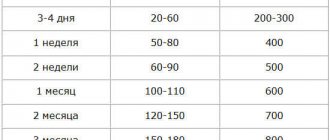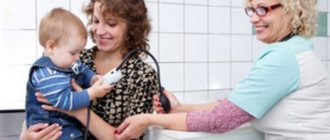Signs of hypotension today most often appear in schoolchildren, adolescents and young women, as well as with increased mental and physical stress, including sports.
Hypotension is a decrease in blood pressure below certain age indicators, in adolescents - below 95 (90) / 65 (60) mm. Hg
In most cases, this pathological condition is associated with a decrease in the tone of blood vessels or a violation of its neurological regulation.
A decrease in blood pressure manifests itself:
- general weakness;
- lethargy;
- apathy;
- headaches;
- dizziness.
With a sharp decrease in vascular tone, fainting occurs.
But most parents do not think about their child’s blood pressure, underestimating the complexity of the problem.
It is important to remember that in the absence of timely diagnosis and adequate treatment, prolonged hypotension can lead to the development of diseases of the heart and other organs and systems of the body.
Hypotension is considered a disease when there is a stable decrease in blood pressure below 90/60 mm. Hg with the manifestation of characteristic symptoms.
What do blood pressure indicators depend on?
Blood pressure depends on:
- from the correct and stable functioning of the heart and the force with which the heart muscle pumps blood through the arteries during systole (heart contraction);
- from the elasticity of the walls of blood vessels (their tone): when the muscles of the vascular wall contract, the pressure increases, and when they relax, it decreases;
- normal regulation of the interaction between vascular tone and heart function by the nervous system.
Most often, this pathological condition develops with vegetative-vascular dystonia (VSD) in schoolchildren and adolescents against the background of hormonal changes in the child’s body and the active growth of many organs and systems, the formation or disruption of the regulatory influence on the vessels of the parasympathetic nervous system or a change in the central regulation of vascular tone (imbalance vascular center).
In addition, this pathological condition can develop as a result of various diseases:
- pathologies of the thyroid gland;
- diseases of the nervous system;
- hormonal imbalances;
- heart pathologies;
- chronic hepatitis and/or cholecystitis;
- ulcerative lesions of the digestive system;
- other serious diseases.
Sometimes a decrease in pressure from 100/60 mm Hg. Art. and lower can also be observed in completely healthy people as a variant of the individual norm or during pregnancy. If this condition is not accompanied by a disturbance in well-being, it is defined as physiological hypotension.
In patients who suffer from chronic hypotension, the walls of blood vessels are often not flexible and even become fragile. In this regard, blood flows slowly and under low pressure through the blood vessels, as a result of which many tissues and organs (primarily the heart and brain) are insufficiently supplied with nutrients and oxygen, which determines the main manifestations of the disease.
Therefore, an increase in low blood pressure with the obligatory determination of the cause of this pathological condition is an important and sometimes difficult issue, especially if it is a pathological condition that develops as a result of various diseases or during pregnancy.
Main causes of low blood pressure
Most often, a decrease in pressure occurs against the background of the following conditions:
- chronic fatigue, prolonged stress;
- educational, physical or work overload;
- depression;
- weather sensitivity (during sudden changes in atmospheric pressure, sudden changes in climate and/or weather conditions);
- hypovitaminosis (groups B, E, C) and/or deficiency of certain microelements;
- uncontrolled use of medications (antispasmodics, heart medications, painkillers, large doses of antibiotics);
- with hormonal imbalance.
Hypotension can develop as a concomitant disease against the background of various diseases:
- with congenital heart defects;
- for chronic lung diseases;
- for arrhythmias;
- for osteochondrosis;
- for diabetes mellitus;
- for tuberculosis.
Chronic hypotension may be one of the symptoms of vegetative-vascular dystonia or pathology of the nervous system.
But in most cases, a persistent decrease in blood pressure has no identifiable causes and is associated with hereditary factors.
Signs of hypotension
Low blood pressure is often manifested by general weakness, drowsiness, lethargy, and irritability.
Other symptoms of hypotension include:
- headache, often in the forehead and migraine attacks;
- dizziness, fainting with a sharp decrease in pressure;
- darkening of the eyes and flickering of spots before the eyes;
- nausea, more often in the morning or immediately after a sudden change in body position;
- sleep disturbances, night sweats;
- sensitivity to cold (cold feet and hands, constant feeling of cold) and/or heat intolerance (especially common with prolonged exposure to the sun);
- weather sensitivity (deterioration of condition due to weather changes);
- problems with concentration, memory impairment;
- various menstrual cycle disorders in girls with hypotension.
How to increase blood pressure at home
Vitamins tone and strengthen the vascular wall:
- ascorbic acid;
- cyanocobalamin;
- retinol;
- routine;
- pyridoxine;
- thiamine;
- riboflavin;
- a nicotinic acid;
- pantothenic acid and other B vitamins.
It is better to start treatment with herbal adaptogens, which include:
- lemongrass;
- ginseng;
- lure;
- Eleutherococcus;
- Aralia;
- Leuzea.
They have a mild stimulating effect on the central nervous system, slightly increase blood pressure, stimulate cardiac activity, eliminate physical and mental fatigue, and drowsiness.
Not all drugs are approved for use by children, because they can disrupt the heart rhythm, increase intracranial pressure, cause convulsions, and bleeding. Prescribed at the rate of 1 drop per 1 year of life in the morning and afternoon. It is better not to use these medications in the evening to normalize blood pressure and performance, since they have a pronounced stimulating effect and can disrupt sleep.
These medications normalize the processes of inhibition and excitation in the cerebral cortex, so they will not quickly raise a person’s blood pressure, but will significantly improve his condition. The course of treatment is 1 month.
The indication for prescribing nootropics is low blood pressure, which is one of the symptoms of vegetative-vascular dystonia.
In order to determine how to raise blood pressure in a particular case, the patient must seek medical help. Nootropics include drugs of different chemical groups, which must be used as prescribed by the attending physician, since the development of adverse reactions and complications is possible. The following medications are used:
- piracetam;
- glycine;
- encephabol;
- pantgogam;
- pyriditol;
- phenibut;
- Cerebrolysin;
- aminolone
Thanks to a wide variety of mechanisms of action, traditional nootropics normalize metabolic, redox, and bioenergetic processes in the brain and improve resistance to hypoxia.
These are long-term medications: from 3 weeks to 3 months.
Side effects: agitation, irritability, anxiety, sleep disturbance, headache, dizziness, abdominal pain, bowel movements, etc.
In addition, substances in this group promote the utilization of glucose by the brain, act as a neurotransmitter, stabilize cell membranes and help remove toxic metabolites from nervous tissue.
The result of the action of nootropics will be:
- improvement of thinking, attention, memory, learning ability;
- restoration of mental and physical performance;
- normalization of sleep;
- increased mood;
- low blood pressure gradually recovers 4-5 weeks after starting treatment;
- reducing feelings of anxiety, fear, tension.
- Adrenergic agonists
These substances can quickly raise blood pressure if it suddenly drops, for example, during fainting. Midodrine increases vascular tone, which leads to an increase in peripheral resistance and an increase in blood pressure, and prevents blood stagnation in the peripheral veins.
To raise low blood pressure with midodrine, you need to drink 7 drops of a 1% solution. You can take the drug after reaching 12 years of age. It does not have a stimulating effect on the central nervous system, but can significantly reduce heart rate.
Before increasing blood pressure quickly at home with adrenergic agonists, it is necessary to take into account existing concomitant diseases of internal organs.
Contraindications:
- adrenal tumors;
- obliterating atherosclerosis of the vessels of the lower extremities;
- thyrotoxicosis;
- prostate adenoma;
- angle-closure glaucoma;
- pregnancy;
- heart failure;
- arrhythmia.
- Psychostimulants and analeptics
How to increase blood pressure at home - caffeine is suitable for this purpose, which is a psychostimulant and analeptic, stimulates the respiratory and vasomotor center and increases blood pressure. It must be used as prescribed by a doctor, because in addition to increasing blood pressure, it has the following properties:
- activates reflex activity;
- increases physical performance;
- reduces drowsiness, fatigue;
- increases the frequency and depth of breathing, heart rate;
- has a diuretic effect;
- reduces blood clotting;
- stimulates the production of gastric juice;
- increases basal metabolism, causing hyperglycemia.
How to increase blood pressure, in addition to caffeine, you can use cordiamine, camphor. But these drugs must be used strictly after consultation with the doctor. Uncontrolled use of drugs to increase blood pressure can cause a hypertensive crisis, stroke and cerebral hemorrhage. How to increase heart pressure and avoid side effects? It is necessary to coordinate the use of drugs with your doctor and take into account possible complications.
Side effects:
- headache;
- dizziness;
- respiratory arrest;
- rave;
- convulsions;
- pain in the heart area.
- Anticholinergics
Drugs in this group include bellataminal, which reduces the excitability of the central and peripheral cholinergic systems of the body. The drug, which is successfully used for changes in blood pressure and labile pulse, has a sedative effect due to the phenobarbital contained in it. Prohibited for use in children under 18 years of age. Bellataminal does not face such a task as quickly normalizing blood pressure. How to safely treat with bellataminal - its dosage must be selected over a long period of time and individually, since unpleasant side effects may develop:
- drowsiness;
- lethargy;
- decreased memory, performance and attention.
- Tranquilizers
How to deal with low blood pressure during depression? Antidepressants and anxiolytics are ideal for this purpose.
Indications for prescribing tranquilizers for low blood pressure:
- neurotic disorders;
- emotional tension;
- anxiety and hypochondriac disorders;
- psychopathy;
- asthenovegetative disorders;
- fears;
- hypochondriacal mood.
Preferred tranquilizers with activating action: grandaxin, trioxazine, herbal antidepressant - St. John's wort.
Indications for their use are determined by a neuropsychiatrist, taking into account all the symptoms the patient has.
- Antioxidants
How to raise heart pressure? For this purpose, antioxidants are used, which are also used to reduce lipid oxidation, increase energy supply to cells, and restore impaired vegetative functions.
Along with fat-soluble vitamins that have an antioxidant effect, the following are used:
- succinic acid;
- lemon acid;
- ubiquinone.
Antioxidants can be used at any age, but strictly after meals, as they are irritating to the stomach.
- Drugs that improve microcirculation
How to increase low blood pressure with vascular drugs - low blood pressure can be treated with drugs that improve blood flow to the brain, but do not reduce tone or cause dilation of the vascular wall. Gives a good effect:
- vinpocetine;
- Actovegin;
- Ginkgo biloba preparations - bilobil.
Drugs in this group should be used only as prescribed by a doctor.
Vinpocetine may be indicated for a child if he has low blood pressure after neuroinfections or traumatic brain injuries. In neurotic conditions, asthenic syndromes, and cognitive impairment, cinnarizine has a good effect.
Diagnostics
Problems with blood pressure can worsen a child’s quality of life and disrupt the functioning of body systems. Therefore, in case of such problems, you should visit a doctor for a detailed diagnosis.
First of all, blood pressure is measured during the examination. The patient must sit. The procedure is carried out in the morning.
Blood pressure readings are checked at least three times with a break of several minutes. If each time the results are lower, then additional examination is necessary.
If hypotension is suspected in children, then prescribe:
- Electrocardiogram.
- Ultrasonography.
- Clinoorstatic test. The doctor assesses the condition of the heart and blood vessels when the child suddenly changes body position.
- Bicycle ergometry. A test that shows how the body reacts to physical activity.
- Rheoencephalography.
- Electroencephalography.
- Checking the condition of the fundus.
- Study of the nervous system.
- Consultation with a psychologist.
Therapy is prescribed depending on the examination results.
How to increase blood pressure using folk remedies
Folk remedies for increasing blood pressure include:
- if you drop a few drops of jasmine, clove, rosemary or lavender essential oil on a scarf and breathe over their vapors, your blood pressure will rise slightly;
- Plants such as ginseng, eleutherococcus, and St. John's wort are considered folk remedies.
How to increase diastolic pressure so as not to harm the functions of the kidneys, heart, endocrine organs - along with medications, it is imperative to do morning exercises, periodically go to the pool and sauna, do foot baths and lead a healthy lifestyle.
Development mechanism
Blood pressure is an important indicator of hemodynamics. It has certain normal values.
The increase occurs due to the implementation of several pathogenetic mechanisms:
- A decrease in the total volume of the vascular bed with an increase in resistance to blood flow, which occurs during arterial spasm (spasm is a significant increase in the tone of the smooth muscles of the vascular walls, leading to a decrease in the diameter of their lumen).
- An increase in the volume of blood plasma in the vessels, increasing pressure on the walls of the arteries.
- A prolonged increase in heart contractions with an increase in the minute volume of blood pushed into the vascular bed.
In adolescents, the most common pathogenetic mechanisms of increased blood pressure (hypertension) are associated with narrowing of the arteries or changes in the functional activity of the heart.
Video on the topic
About blood pressure norms in children in the video:
After completion of the course of therapy, it is recommended that further adherence to a therapeutic diet and daily routine contribute to complete recovery.
The information on the MyMedNews.ru website is for reference and general information, collected from publicly available sources and cannot serve as a basis for making a decision on the use of medications in the course of treatment.
MyMedNews.ru
And we also have
Hypertension in adolescence - why does blood pressure increase and how to normalize it?
Age characteristics
Parents should understand that blood pressure may change throughout the day.
- Up to one year. Immediately after birth, the baby’s blood pressure can still fluctuate from 96/50 to 60/40. Within a month it will change - from 112/74 to 80/40.
- From one year to three years, the baby no longer develops so quickly. Blood pressure can range from 112 over 74 to 110 over 60.
- From three to nine years of age, a reading from 116/70 to 110/60 is considered normal. Schoolchildren may have hypotension due to stress.
- Teenage years. The normal range is from 136/86 to 110/70. At this time, a decrease in pressure is a normal phenomenon associated with hormonal changes.
Treatment tactics
Therapy should be carried out taking into account the age and individual specifics of the body. Under the age of 10 years, blood pressure values should not be influenced by medication. It is better to give your child weak black coffee, which can increase blood pressure. Children over 11 years of age are allowed to take medications, but only with a doctor's prescription. Such drugs include “Gutron”, “Heptamil” and their analogues. Upon reaching 12 years of age, during the period of hormonal changes in the body, children with low blood pressure are prescribed drugs such as Fethanol, Pantogam and Caffeine.
Folk remedies, herbal medicine
In the absence of contraindications, you can use traditional therapy methods. Treatment without medications will not cause complications and will have a gentler effect on the child’s body. The most common folk remedy is herbal medicine. Herbal decoctions and infusions are very effective at low blood pressure, and the affordable price and large selection allow you to select the required composition and brew it as a replacement for tea. For unstable blood pressure, it is recommended to use the following herbs:
- ginseng;
- currant leaves;
- Eleutherococcus;
- lemongrass;
- celery.
Correct mode
In addition to medical procedures, children need to adhere to the correct daily routine and correctly distribute physical activity. The regimen should be based on the following recommendations:
- The duration of rest should be at least 9 hours a day.
- It is important to evenly combine mental activity with rest and entertainment.
- You should spend at least 2-3 hours outdoors, while avoiding constant exposure to the open sun.
Balanced diet
A balanced diet plays an important role in complex treatment. Children who develop hypotension should eat more often than healthy ones. The diet should be varied, and snacks are recommended in addition to main meals. Your daily diet should include foods such as:
- fermented milk products with high fat content;
- cereals, potatoes and other products containing starch;
- freshly picked fruits and vegetables, replenishing the lack of vitamins in the body;
- black and green tea containing berries, pieces of fruit, spices;
- any varieties of nuts.
Physiotherapy
To maintain a child’s body in good shape, one should not forget about physical development. Regular sports activities and devoting at least 2 hours to gymnastics daily are important. The main purpose of gymnastics for low blood pressure is to comprehensively improve the body’s health, improve blood circulation, and increase muscle tone. The following are recommended exercises for hypotension:
- Walking. First, normal walking is required, after which you need to add arm swings, raising your knees, and steps on your toes. Each stage should be completed for half a minute.
- Turns. With your feet shoulder-width apart, you need to place a gymnastic stick along your back and alternately turn in each direction.
- Stretching. Standing straight, you need to raise your arms and stretch strongly while inhaling. Exhaling, lower your hands and relax. The required number of repetitions is from 3 to 5.
Massage and hardening
Massage is also an effective treatment method. In case of hypotension, it normalizes the functioning of the nervous system, increases resistance to external negative influences, and activates the recovery process from diseases associated with a drop in pressure. When performing the procedure, special attention is paid to the spine, abdomen, collar area and limbs.
In certain situations, massage is not permitted for children. Such cases include an exacerbation phase of hypotension, too low blood pressure, and poor health.
A procedure such as hardening can also increase blood pressure. Children are recommended to take a contrast shower several times a week, which has a beneficial effect on the entire body, keeps blood vessels toned, fills them with energy, and promotes blood circulation. Children should be taught to harden during hot periods so that the body does not experience severe stress.
Source
A 12 year old child has low blood pressure, what should I do?
Changes in blood pressure are a common problem found not only among adults, but also in children. Disorders that provoke low blood pressure in a child can lead to negative consequences. Such conditions create discomfort and cause symptoms that have a negative impact on health, so you should not delay treatment of the disease.
Kids and their problems
Source: https://pro-serdze.ru/narodnaya-meditsina/u-rebenka-12-let-nizkoe-davlenie-chto-delat.html
Prevention
Preventive measures are best carried out in the cool season. Children are often prescribed herbal medicines of ginseng, eleutherococcus or zamanikha in autumn and winter .
A positive attitude and a favorite activity with the inclusion of regular physical activity in this program play an important role in the prevention of childhood hypotension.
It is important to exclude stressful situations and psychological trauma from the lives of children prone to hypotension. In this sense, psychological training and support from a psychologist are important.
You should limit evening TV viewing and stimulating computer games. It is better to replace them with quiet activities and walks.
The correct daily routine and nutrition, psychological support for parents of insecure or irritable children is the best prevention of complications of the disease.
Symptoms of pathological hypotension
Pathological decrease in blood pressure in adolescents is accompanied by characteristic symptoms:
- frequent headaches localized in the back of the head, dizziness;
- a sharp decrease in performance, increased fatigue;
- lack of interest in learning new material;
- giving up your favorite pastime;
- tearfulness for any reason;
- sensitivity to weather changes;
- pale skin;
- sweating and coldness of the fingers and toes;
- insomnia at night and drowsiness during the day;
- feeling of suffocation, lack of oxygen in a closed room during prolonged standing;
- loss of orientation in space due to a sudden change in body position in space;
- weakness in the morning, persisting throughout the day.
Important! An increase in the manifestation of the symptomatic picture is observed after a long stay at the computer, physical activity, or taking a hot bath.
If symptoms appear complex, it is recommended to measure the teenager’s blood pressure. If suspicions are confirmed, appropriate measures must be taken. Even a short-term manifestation of this condition in childhood is extremely dangerous, since it lays the foundation for chronic hypotension in the future.
Treatment of hypotension: general recommendations
After identifying the causes of low blood pressure in a teenager, treatment is aimed at eliminating them. If they are pathological in nature, the child is prescribed highly targeted therapy using specific medications. In other cases, hypotension can be eliminated without medication.
Daily regime
A teenager's life should not be limited to school. Excessive stress during lessons and when studying material at home leads to the appearance of depression. To minimize the impact of daily stress, it is necessary to teach your child to take a break from the daily routine. Walking in the fresh air, moderate mental activity, and visiting extracurricular clubs and sections are good for this purpose.
Don't forget about the need for proper rest. To avoid suffering from insomnia at night, it is recommended to distribute responsibilities evenly, without leaving urgent matters until late in the evening. Before going to bed, you can do some quiet work, read a book, trying not to sit too long in front of the computer or TV.
Physical activity
A growing body especially needs a complete supply of oxygen to its organs. Without moderate physical activity, this process becomes difficult, the growth and development of tissues is inhibited, the child becomes lethargic and lacking initiative. To prevent a vicious circle, it is recommended to play sports, but without fanaticism, since heavy loads are just as dangerous as complete inactivity.











